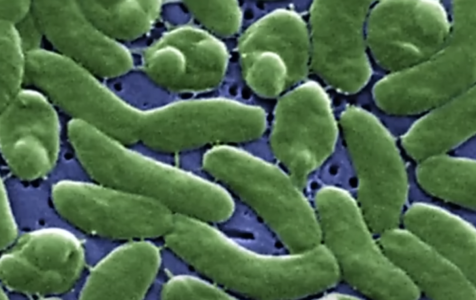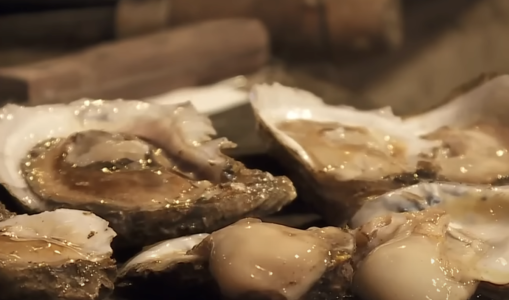Cases of dangerous coastal bacteria are climbing—how to protect yourself
By
Veronica E.
- Replies 0
Warm weather, salty breezes, and fresh seafood are some of the joys of coastal living—but they may also come with hidden risks.
Health officials are sounding the alarm after a growing number of people have been infected with a rare but life-threatening bacteria found in warm seawater and raw shellfish.
This year alone, several lives have been lost, and experts say the threat is spreading further than ever before.
The bacteria, Vibrio vulnificus, can cause a fast-moving infection with devastating effects—especially for older adults and people with health conditions.
Here’s what you need to know to stay safe in the water and at the dinner table.

Vibrio vulnificus is a naturally occurring bacteria that thrives in warm, brackish coastal waters—especially during the warmer months between May and October.
It’s been known to exist in the Gulf of Mexico for decades, but in recent years, cases have been rising and spreading northward.
The bacteria is especially dangerous because it can cause necrotizing fasciitis, a fast-moving and destructive infection sometimes referred to as "flesh-eating disease."
According to the Centers for Disease Control and Prevention (CDC), about 1 in 5 people who become infected with Vibrio vulnificus die—often within a day or two of developing symptoms.
For those in high-risk groups, early awareness and quick treatment can make all the difference.
There are two main ways this bacteria enters the body:
Experts believe climate change is playing a key role.
As global temperatures rise, so do water temperatures, allowing Vibrio vulnificus to survive and spread in regions that were previously unaffected.
Dr. Fred Lopez from LSU Health notes that the bacteria, once mostly limited to the Gulf Coast, is now being detected as far north as New York and Connecticut.
So far in 2025, Louisiana has reported 26 infections and five deaths—far more than the usual yearly average of seven cases and one fatality.
Alabama has seen 10 cases (one fatal), Mississippi three (one fatal), and Florida 13 cases with eight deaths.
In response, several oyster beds have been temporarily closed as a safety precaution.
If you’ve recently spent time in warm coastal waters or eaten raw seafood, keep an eye out for the following symptoms:
Symptoms can appear rapidly—sometimes within hours—so it’s important to seek medical care immediately.
Prompt treatment with antibiotics can save lives and prevent serious complications.

While anyone can become infected, certain groups are more vulnerable to severe illness:
The good news? These infections are rare—and mostly preventable with the right precautions:
Source: YouTube / CBS News
The increase in Vibrio vulnificus cases is part of a broader shift in how climate and public health intersect.
Warmer waters are changing the patterns of marine bacteria, and state health agencies are adjusting their protocols by issuing public warnings and monitoring oyster beds more closely.
As the environment continues to evolve, so must our awareness.
That said, coastal areas remain rich in beauty and culture—and with the right information, they can still be enjoyed safely.
Staying informed and taking sensible steps can help protect you and your loved ones.
Read next:

Have you had a brush with a waterborne illness? Do you have tips for safe seafood prep or questions about wound care and summer travel safety? Share your experience in the comments and help others in our community stay safe and informed.
At The GrayVine, we believe knowledge is the best defense—especially when it comes to health.
Health officials are sounding the alarm after a growing number of people have been infected with a rare but life-threatening bacteria found in warm seawater and raw shellfish.
This year alone, several lives have been lost, and experts say the threat is spreading further than ever before.
The bacteria, Vibrio vulnificus, can cause a fast-moving infection with devastating effects—especially for older adults and people with health conditions.
Here’s what you need to know to stay safe in the water and at the dinner table.

Warm coastal waters and raw shellfish can sometimes carry bacteria that pose serious health risks. Image Source: YouTube / CBS News.
What is Vibrio vulnificus?
Vibrio vulnificus is a naturally occurring bacteria that thrives in warm, brackish coastal waters—especially during the warmer months between May and October.
It’s been known to exist in the Gulf of Mexico for decades, but in recent years, cases have been rising and spreading northward.
The bacteria is especially dangerous because it can cause necrotizing fasciitis, a fast-moving and destructive infection sometimes referred to as "flesh-eating disease."
According to the Centers for Disease Control and Prevention (CDC), about 1 in 5 people who become infected with Vibrio vulnificus die—often within a day or two of developing symptoms.
For those in high-risk groups, early awareness and quick treatment can make all the difference.
Also read: A hidden danger at the shore? What’s raising concerns this summer
How does infection happen?
There are two main ways this bacteria enters the body:
- Through open wounds: Even small cuts or scrapes can provide an entry point if they’re exposed to contaminated seawater. This route is especially risky for people with liver disease, diabetes, or weakened immune systems.
- By eating raw or undercooked seafood: Oysters are the most common source, but any raw shellfish can carry the bacteria. This year, several fatalities have been linked directly to the consumption of raw oysters.
Also read: Protect yourself: Flesh-eating bacteria surge in Florida after hurricanes!
Why are cases increasing this year?
Experts believe climate change is playing a key role.
As global temperatures rise, so do water temperatures, allowing Vibrio vulnificus to survive and spread in regions that were previously unaffected.
Dr. Fred Lopez from LSU Health notes that the bacteria, once mostly limited to the Gulf Coast, is now being detected as far north as New York and Connecticut.
So far in 2025, Louisiana has reported 26 infections and five deaths—far more than the usual yearly average of seven cases and one fatality.
Alabama has seen 10 cases (one fatal), Mississippi three (one fatal), and Florida 13 cases with eight deaths.
In response, several oyster beds have been temporarily closed as a safety precaution.
Also read: Could your gut bacteria help protect you from toxic "forever chemicals"?
What symptoms should you watch for?
If you’ve recently spent time in warm coastal waters or eaten raw seafood, keep an eye out for the following symptoms:
- Redness, swelling, or pain around a wound
- Skin blistering or discoloration
- Fever, chills, or low blood pressure
- Nausea, vomiting, or diarrhea if the bacteria was ingested
Symptoms can appear rapidly—sometimes within hours—so it’s important to seek medical care immediately.
Prompt treatment with antibiotics can save lives and prevent serious complications.

Raw oysters are a common source of Vibrio infections, making thorough cooking the safest choice. Image Source: YouTube / CBS News.
Also read: Experts reveal the shocking kitchen item harboring dangerous bacteria—You definitely own it!
Who is most at risk?
While anyone can become infected, certain groups are more vulnerable to severe illness:
- People with chronic health conditions like diabetes or liver disease
- Those with weakened immune systems
- Older adults
- Anyone with open wounds, even minor cuts or scrapes
Also read: Experts reveal the key difference between rare steak and rare chicken
How to protect yourself
The good news? These infections are rare—and mostly preventable with the right precautions:
- Avoid swimming with open wounds: Stay out of warm coastal waters if you have cuts, sores, or healing surgical sites. Waterproof bandages help, but complete avoidance is safest.
- Cook seafood thoroughly: Skip the raw oysters and fully cook all shellfish before eating, especially if you’re in a higher-risk category.
- Clean up carefully: Wash your hands after handling raw seafood, and disinfect any surfaces or tools that touch it.
- Watch water conditions: Avoid coastal swimming after heavy rains or hurricanes, which can stir up bacteria and raise infection risk.
- Act fast if symptoms appear: If you develop sudden symptoms after swimming or eating seafood, don’t wait—seek medical attention right away.
Source: YouTube / CBS News
What’s next as coastal risks grow?
The increase in Vibrio vulnificus cases is part of a broader shift in how climate and public health intersect.
Warmer waters are changing the patterns of marine bacteria, and state health agencies are adjusting their protocols by issuing public warnings and monitoring oyster beds more closely.
As the environment continues to evolve, so must our awareness.
That said, coastal areas remain rich in beauty and culture—and with the right information, they can still be enjoyed safely.
Staying informed and taking sensible steps can help protect you and your loved ones.
Read next:
- Alert raised as bacteria found in US gardens has been linked to five deaths—Are you at risk?
- Is this deadly ancient illness becoming impossible to cure? Shocking new mutation threatens millions
- A 30-year wait ends: New antibiotic offers relief for millions struggling with UTIs
Key Takeaways
- Several deaths have been reported in 2025 from Vibrio vulnificus, a flesh-eating bacteria found in warm coastal waters and raw seafood.
- Infections can occur through open wounds exposed to seawater or by eating raw or undercooked shellfish—especially oysters.
- Experts believe climate change is fueling the rise and spread of the bacteria, with cases appearing beyond the Gulf Coast and as far north as the East Coast.
- Health officials recommend avoiding coastal water exposure with open wounds, thoroughly cooking seafood, and seeking immediate care if symptoms develop.
Have you had a brush with a waterborne illness? Do you have tips for safe seafood prep or questions about wound care and summer travel safety? Share your experience in the comments and help others in our community stay safe and informed.
At The GrayVine, we believe knowledge is the best defense—especially when it comes to health.






